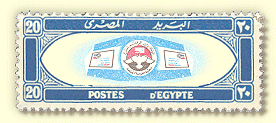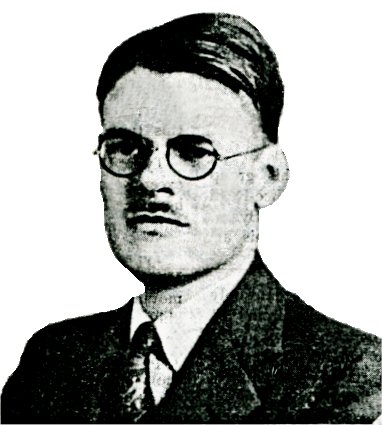


The study of Egyptian Postal Markings and Cancellations was first undertaken by R.Seymour Blomfield as Study VI of the ESC. His first report was published in L'OP 30 in October 1936 with subsequent reports in the same magazine. His initial studies involved the postmarks up to 1880 (known as the Classic Period) and these fell relative easily into categories as determined by the wording and frame ornaments used. To these he gave types and categories irrespective of the place of use. So handstamps of Type V could have been made for use in Cairo, Benha, Luxor and so on. As more data appeared these types were given sub-types (such as V-1, V-2 etc). Then later these themselves were given sub-types (V-2.1, V-2.2 etc) as made necessary by the discovery of small design differences, such as the way the date-slug was made up or some slight change in CDS-ornament. This method of classification makes eminent sense if a unified design for handstamps is maintained, so for instance if one was studying British postmarks the current interlocking double wavy rings pattern can no doubt be ascribed to hundreds if not thousands of post offices. While this worked reasonably well in the beginning for Egypt, for later postmarks the complexity of different uses, shapes and sheer variety meant that types were distinguished that followed no logical pattern, especially as those who succeeded Blomfield named types and sub-types perhaps without any clear understanding of the original system. Complicating matters further, after the turn of the century and the First World War Egyptian hand-cancels often failed to follow neatly categorised styles with many (perhaps locally produced?) being unique in design. As well as his unified designs, Blomfield had also categorised some markings by usage, for instance, Air Mail, Arrival, Registration, TPO etc. This itself can be problematical since more than one service indicator may occur within the same handstamp, for instance registered parcels be entered under Registered or Parcels? Or both? This lack of clarity has often resulted in one or more cancels ending up with different type numbers in different sections of the study. Later researchers have tended to concentrate on postmarks for a particular use, such as Hotels or TPOs etc. In doing so they have tended to implement their own typing methods more suited to the particular style of postmark under study. Those postmarks hived off as separate studies remain referred to by their original numbers or in some cases are not given any typing at all. The special-purpose handstamps are often found misused, probably from carelessness or lax approach by the post office employee or because the appropriate canceller had been mislaid. No particular meaning need be attributed to this apparent misuse. Without doubt, though, Egyptian postal historians owe Blomfield an enormous dept of gratitude as he left a legacy of over 400 drawings of postmarks which, although never published as such, were circulated to members of the Circle. Those up to 1880 are all available in Peter Feltus's extensive update of Study VI and some of the rest, with a few additions, in Peter Smith's Egypt, Stamps and Postal History albeit scattered throughout the book according to subject. Chichini's all-Arabic book tarikh el barid contains all of Blomfield's drawings with a few additions. Air Mail markings extending way beyond those of Blomfield are to be found in John Sears's Airmail book, while Peter Smith classified his TPOs according to the Blomfield pattern. The the Hotel postmarks have been reported in several philatelic journals, with the latest update in the QC, and a few other specific-usage postmark studies and reports (Stations, Paquebots, Palaces and so on) have also appeared in the QC, so over the years in total the recorded number of postmarks must be well over the 1,000 mark. Sheets. Blomfield started to publish in 1936 with further reports in the L'OP. He later issued data sheets to Circle members (see below) beginning in 1938 with the classic postmarks (1865-1879). In 1970 these were developed into a booklet with further editions by Feltus. The last edition, now 58 pages, was published in 1983. Blomfield continued to record further data sheets with postmarks up to the end of the monarchy. These were expanded by Mackenzie Low and Schmidt with some finds being published in the QC. The sheets appeared to be available up to the 1970 but by 1980 requests by new members went wanting. In 1983 Hall published new sheets based on those of Blomfield and adding from Smith (TPOs), (Sears) Airs, (Feltus) Classis (Feltus) and Chichini. These sheets abandoned all type classification beyond the classic period in the hope that the ESC could come up with a more meaningful general typing system. This never happened, and while these sheets were distributed to Circle members at meetings along with two notes in the QC they met with no interest from members. When offered free, without response, it was suggested that members may be embarrassed to ask for "a freebie". When they were offered at a small cost, it was suggested that members did not respond because perhaps they thought that ESC records should be free! These sheets in fact offer little beyond anything that can be found in the data sheets and published literature so have not be placed on this site. Other publishers. Later researchers have tended to concentrate on postmarks serving a particular purpose, such as Hotels or TPOs etc. In doing so they have tended to implement their own methods more suited to the particular style of postmark under study, or in some cases making no classification at all. Boulad wrote several articles in the 1950s and 1960s (L'OP 77, 80, 81 etc.) but made very little use of the Blomfield types. In articles by Minett and Firebrace, and later Firebrace and Benians, they were also ignored them, (QC103/104 & 125). In Firebrace's book Campaigns in the Near East he uses his own typing i.e. C9 was Blomfield's GS-5, as used by Smith in his book. Mazloum (L'OP 99) ignores Blomfields types in his own articles but uses them (L'OP 88) when referring to those from Chaftar. Boulad d'Humières (L'OP 101, 104) and Gougas (L'OP 105) also ignore them. Smith uses them in L'OP 96, 103, but not in L'OP 112. Chaftar seems to be one of the few regular contributors to make much use of them (L'OP 81, 123 etc). What emerges is that the Blomfield typing has found little currency beyond Study VI and the classic period. Even here there is some slight discrepancy: while Peter Feltus, the heir to the study in his Egyptian Postal Markings of 1865-1879 ( ESC Study VI Part One, 1983), uses the "new" Blomfield numbers Peter Smith in his Egypt: Stamps and Postal History (1999), uses the classification but omits the "n" for new. So type II-5n on Blomfield's addendum sheet 10 is the same in Feltus but is II-5 in Smith and similarily for III-1n a, III-1.5n etc. For TPOs Peter Smith's The Travelling Post Offices of Egypt (1983), is the preferred classification but in his Egypt: Stamps and Postal History he uses a modified and simpler form. TPO 2A1 becomes Type 2, as does TPO-2A1A. TPO-3B1 becomes Type 3B, TPO 6A1a becomes Type 6 and TPO-8A5A Type 8 For Hotels the preferred typing is that of Winter and Benians as published by Murphy QC 194. For Airs see Sears although he eschews typing altogether. For Rurals the preferred typing is now published in Murphy/Shoukry's book Egypt: The Rural Postal Service (2010).), where a painstaking attempt has been made to make every digit in the six-figure classification significant and meaningful. For other postmarks one can use Blomfield or Smith Egypt: Stamps and Postal History, which covers most of those of Blomfield over several chapters. One strange point is that the "Ttraffic" types of Blomfield are missing from Smith. There are alternatives for Express/delivery and Stations given on this web-site. A general overview is also given in the public part of the web-site. Other areas of study for specific-use types have been suggested, but perhaps the most glaring omission is that of the general purpose type all in Arabic. Most of those who have been recording Egyptian postmarks have had little or no understanding of Arabic, so the native language has tended to be given second place behind the more easily read European-language (first Italian, the French or English) section of the handstamp. In a few cases the Arabic in the drawn cancels included in the various studies has been traced "as seen", in such a way that it is incoherent or even meaningless. Murphy/Shoukry avoid this problem by illustrating all their postmarks as a direct scan: none is drawn. Undoubtedly to gain full enjoyment from studying Egyptian postmarks some time spent getting to grips with the Arabic script can pay huge dividends. There is still much to discover
|
|
|